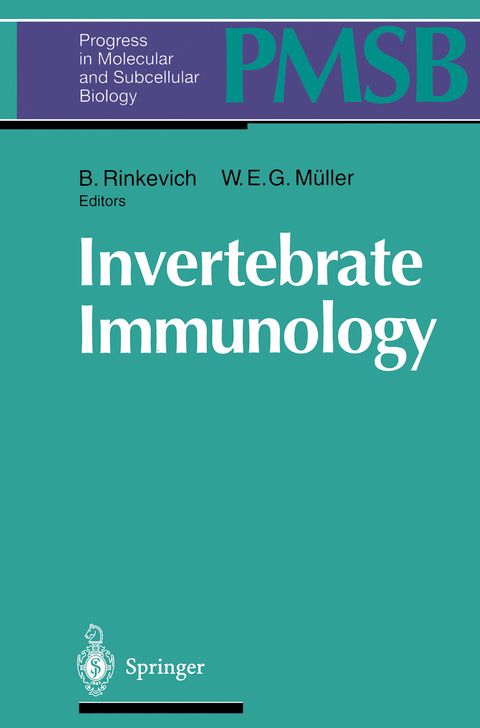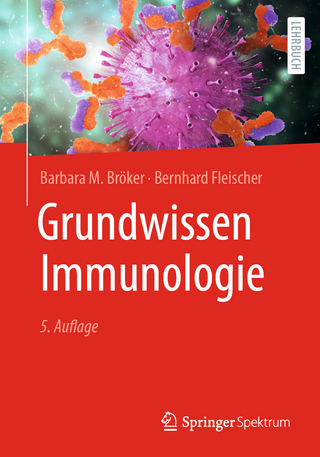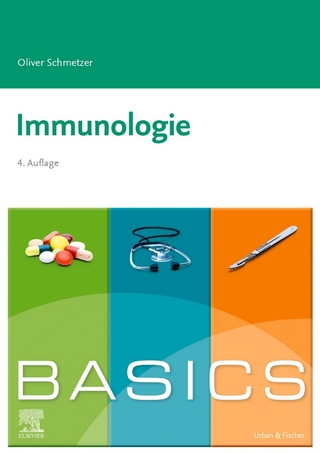
Invertebrate Immunology
Springer Berlin (Verlag)
978-3-642-79737-8 (ISBN)
Humoral Factors in Marine Invertebrates.- References.- Earthworm Immunity.- 1 Introduction.- 2 Cells of the Immune System.- 3 Natural Immunity and Nonspecific Cellular Responses.- 4 Immune Reactions to Transplants: Coelomocyte Responses.- 5 Proliferative Response of Coelomocytes to Transplantation Antigens.- 6 Membrane Components Allied to the Ig Superfamily.- 7 Communication Between Immune, Nervous and Endocrine Systems.- 8 Cell-Mediated Cytotoxicity.- 9 Mechanisms of Cellular Defense: Adaptive Cellular Response.- 10 Lysozyme-Like Substances.- 11 Evolution of Immune Responses and Where Earthworms Fit In.- References.- The Prophenoloxidase Activating System and Associated Proteins in Invertebrates.- 1 Introduction.- 2 Components of the Prophenoloxidase Activating System.- 3 Complement-like Proteins.- 4 Clotting Proteins.- 5 Summary.- References.- Inducible Humoral Immune Defense Responses in Insects.- 1 Introduction.- 2 Antibacterial Responses.- 3 The Response to Soluble Proteins.- 4 Concluding Remarks.- References.- Blood Clotting in Invertebrates.- 1 Introduction.- 2 The Limulus Clotting System.- 3 Clotting in Crustaceans and Other Arthropods.- 4 Conclusion.- References.- Immune Function of ?2-Macroglobulin in Invertebrates.- 1 Introduction.- 2 Structure of ?2-Macroglobulin.- 3 The ?2-Macroglobulin Protein Family.- 4 ?2-Macroglobulin in Invertebrates.- 5 Receptor-Mediated Clearance of ?2-Macroglobulin-Protease Complex.- 6 ?2-Macroglobulin in the Blood Cells.- 7 Interaction of ?2-Macroglobulin with the Proteases of the Clotting System of Limulus.- 8 Cytokine-Binding Activities of ?2-Macroglobulin.- 9 The Plasma Based Cytolytic System of Limulus.- 10 ?2-Macroglobulin and the Inactivation of the Proteases of Invading Parasites.- 11 Interaction of the?2-Macroglobulin with Other Systems of Immunity in Invertebrates.- 12 Evolutionary Considerations.- References.- Host-Parasite Interactions in Molluscs.- 1 Introduction.- 2 Molluscan Internal Defenses.- 3 The Fates of Invading Molluscan Parasites.- 4 How Do Molluscs Respond to Parasite Infections?.- 5 Are Susceptible Snails Simply Incompetent?.- 6 How Does a Parasite Escape Destruction by a Molluscan Host?.- 7 Conclusions.- References.- Clotting and Immune Defense in Limulidae.- 1 Introduction.- 2 Hemolymph.- 3 Hemocytes.- 4 Hemocyte Granules.- 5 Clotting Cascade.- 6 Protease Inhibitors.- 7 Transglutaminase and Its Substrates.- 8 Antibacterial Substances.- 9 Agglutinins/Lectins.- 10 Summary.- References.- Cytotoxic Activity of Tunicate Hemocytes.- 1 Introduction.- 2 Ascidian Hemocytes.- 3 Multiple Modes of Self/Nonself Recognition and Cytotoxicity.- 4 The Hemocytes Involved in Cytotoxic Reactions.- 5 Hemocytes Involved in the Contact Reaction.- 6 Globular Granulocytes (Morula Cells): Are They Involved in Cytotoxic Reactions?.- 7 Hemocytes with NK-Like Activity.- 8 Conclusions.- References.- Humoral Factors in Tunicates.- 1 Introduction.- 2 Hemagglutinins (Lectins).- 3 Antimicrobial Substances.- 4 Other Humoral Factors.- 5 Humoral Factors Involved in Allogeneic Recognition.- 6 Concluding Remarks.- References.- Molecular Aspects of Immune Reactions in Echinodermata.- 1 Introduction.- 2 Response to Allogeneic Transplants.- 3 Clearance Studies.- 4 Humoral Molecules.- 5 Cytokines.- 6 Immune Effector Cells.- 7 Summary and Concluding Remarks.- References.
"...an essential text for any invertebrate immunologist. Furthermore, it should also be of interest to scientists with backgrounds in vertebrate immunology." Immunology Today
"...an essential text for any invertebrate immunologist. Furthermore, it should also be of interest to scientists with backgrounds in vertebrate immunology." Immunology Today
| Erscheint lt. Verlag | 27.12.2011 |
|---|---|
| Reihe/Serie | Progress in Molecular and Subcellular Biology |
| Zusatzinfo | XIII, 250 p. |
| Verlagsort | Berlin |
| Sprache | englisch |
| Maße | 155 x 235 mm |
| Gewicht | 410 g |
| Themenwelt | Studium ► Querschnittsbereiche ► Infektiologie / Immunologie |
| Naturwissenschaften ► Biologie ► Biochemie | |
| Naturwissenschaften ► Biologie ► Zellbiologie | |
| Schlagworte | Biology • Cell • Cell Biology • immune response • immunity • Immunologie • immunology • Interverteberates • Marine Biology • Marine Organismen • Marine Organisms • Meeresbiologie • Wirbellose • Zellbiologie |
| ISBN-10 | 3-642-79737-7 / 3642797377 |
| ISBN-13 | 978-3-642-79737-8 / 9783642797378 |
| Zustand | Neuware |
| Haben Sie eine Frage zum Produkt? |
aus dem Bereich


